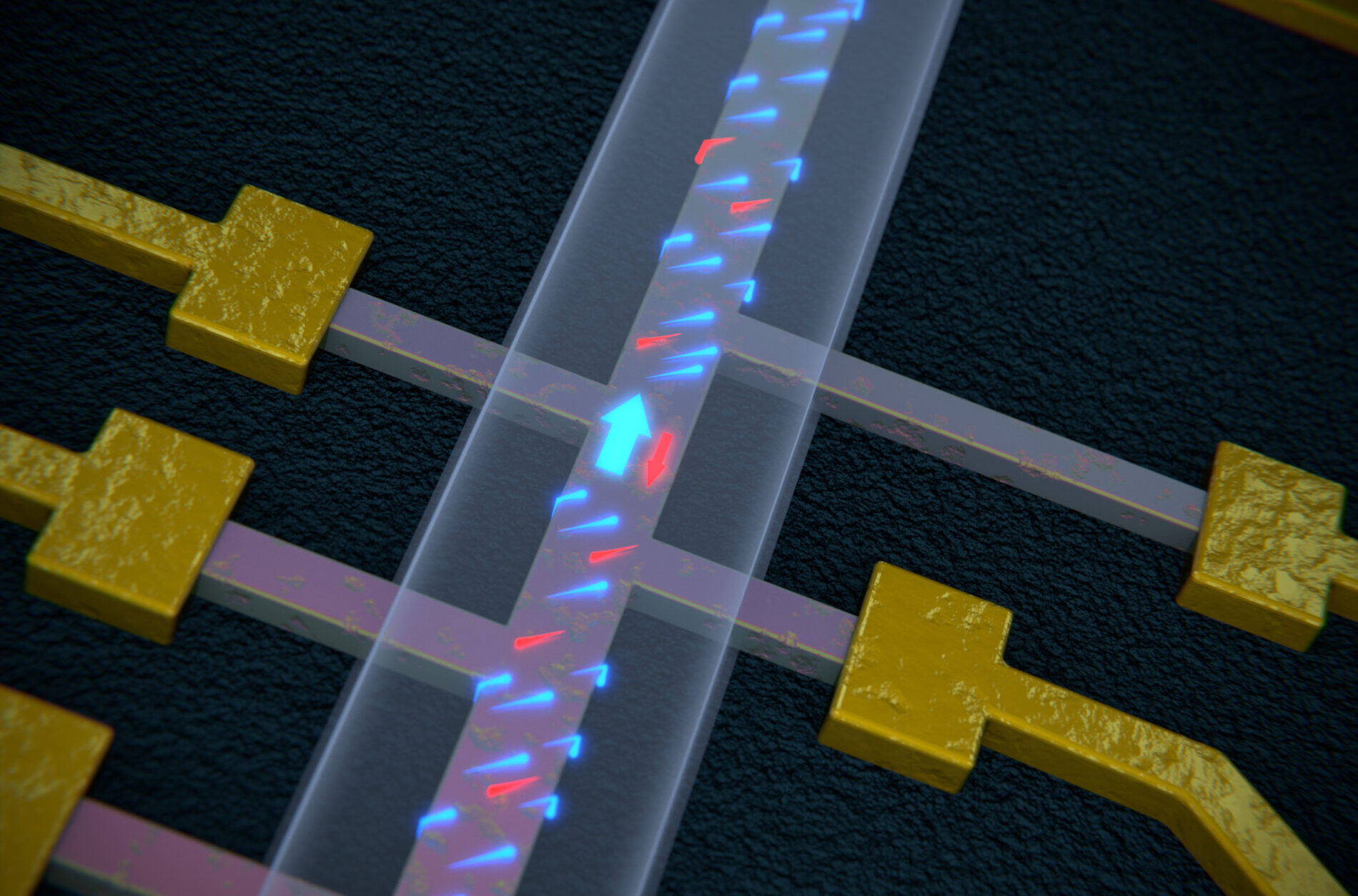Quantum one-way street in topological insulator nanowires
Very thin wires made of a topological insulator could enable highly stable qubits, the building blocks of future quantum computers. Scientists see a new result in topological insulator devices as an important step towards realising the technology’s potential / publication in ‘Nature Nanotechnology’
An international group of scientists have demonstrated that wires more than 100 times thinner than a human hair can act like a quantum one-way street for electrons when made of a peculiar material known as a topological insulator. The discovery opens the pathway for new technological applications of devices made from topological insulators and demonstrates a significant step on the road to achieving so-called topological qubits, which it has been predicted can robustly encode information for a quantum computer.
To achieve this result, experimental physicists at the University of Cologne in the group of ML4Q Spokesperson Yoichi Ando closely collaborated with the groups of Jelena Klinovaja and Daniel Loss at the University of Basel. The study ‘Giant magnetochiral anisotropy from quantum confined surface states of topological insulator nanowires’ has now been published in Nature Nanotechnology.
Topological insulators are materials in which a combination of quantum mechanics and the mathematical concept of topology – a combination that won the Nobel Prize in 2016 – produce conductive surfaces and insulating interiors. Topological insulators are highly promising candidates for future technologies and as potential platforms for quantum computing. The researchers showed that, under the right circumstances, electric currents can flow more easily in one direction compared to the other, a process known as rectification. Rectification is the basis of most wireless technologies and so has a wide range of applications. However, unlike the rectifiers found in, say, smartphones, the current rectification effect discovered in topological insulator nanowires arises as a result of quantum mechanics and is extremely controllable. Normally, quantum mechanical rectification effects are tiny. However, the unique degree of control made possible by modern device fabrication techniques resulted in a gigantic quantum rectification effect in topological insulator nanowires, far bigger than any previously discovered.
Usually, quantum rectification effects arise as a result of something known as spin-orbit coupling, which is actually a mix of quantum mechanics and Einstein’s theory of relativity. That strange mix normally results in tiny rectification effects. What is great about the topological insulator nanowires is that we can artificially produce essentially the same physics but with a much larger magnitude. This leads to a rectification effect that is really huge compared to other materials. It is also one of the aspects that makes topological insulators so exciting for applications in quantum computing.
Ohm’s law states that the current flowing through a device is governed by the voltage drop across it and a quantity known as resistance. However, when quantum mechanics is at play, Ohm’s law sometimes needs to be corrected. In particular, if a material or a device does not look the same when all its spatial properties are mirrored – so-called broken spatial inversion symmetry – applying a magnetic field means the quantum version of Ohm’s law allows current to flow more easily in one direction compared to the other. The size of the current rectification is determined by the difference between the resistances in each direction. The high degree of control possible in topological insulator devices allowed the team of researchers to achieve a truly gigantic rectification effect compared to what had previously been observed.
It was very exciting when we saw what the theory had predicted. The rectification effect is highly controllable with small changes of gate voltage, and that could have quite promising technological implications. It took a lot of late evenings in the lab, but it was worth it.
Topological insulators have long been considered good candidates to serve as the basis for topological quantum computers, which promise unprecedented computing power. However, good control over topological insulator devices is essential to be able to produce topological qubits.
Our study demonstrates yet another novel quantum phenomenon that is possible in topological insulator devices and highlights their potential technological applications. It is also another key piece of evidence that topological insulators are ideal platforms for hosting Majoranas. The discovery of Majoranas would be a real game changer for quantum computing.
Media Contact:
Professor Dr Yoichi Ando
Institute of Experimental Physics of the University of Cologne
+49 221 470 3570
ando@ph2.uni-koeln.de
Press and Communications Team:
Dr Marian Barsoum
ML4Q Public Outreach Manager
+49 178 304 1884
marian.barsoum@uni-koeln.de
Publication: Giant magnetochiral anisotropy from quantum confined surface states of topological insulator nanowires; Henry F. Legg, Matthias Rößler, Felix Münning, Dingxun Fan, Oliver Breunig, Andrea Bliesener, Gertjan Lippertz, Anjana Uday, A. A. Taskin, Daniel Loss, Jelena Klinovaja, Yoichi Ando; https://www.nature.com/articles/s41565-022-01124-1
